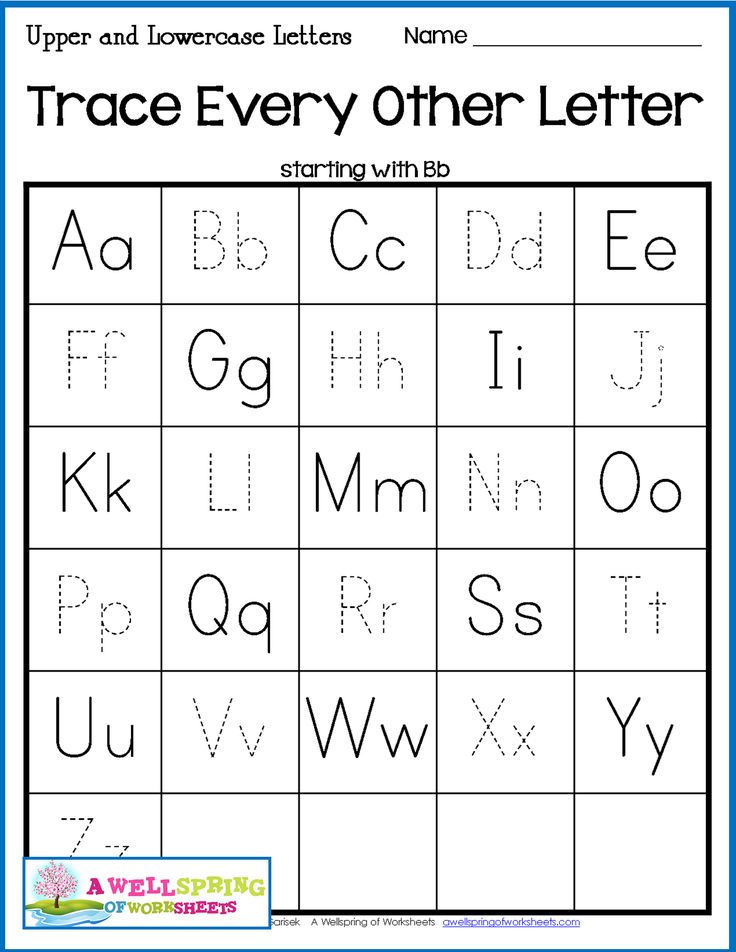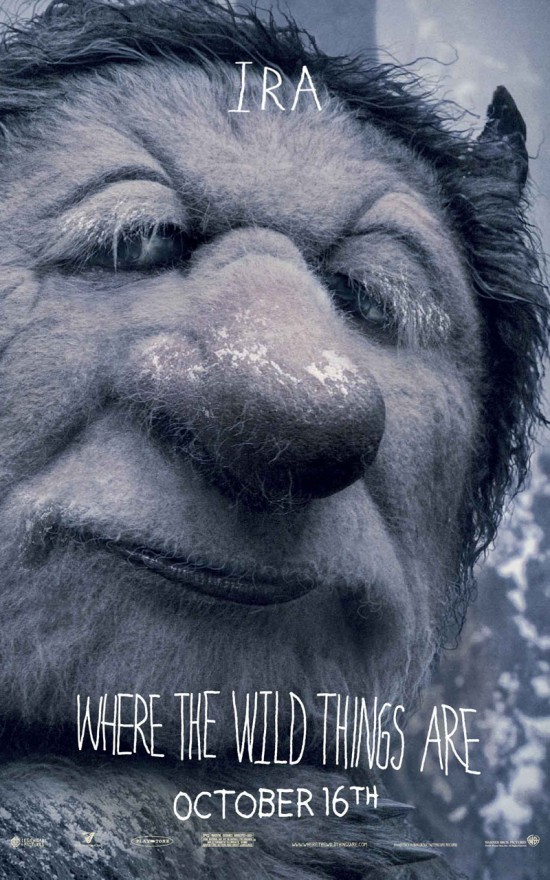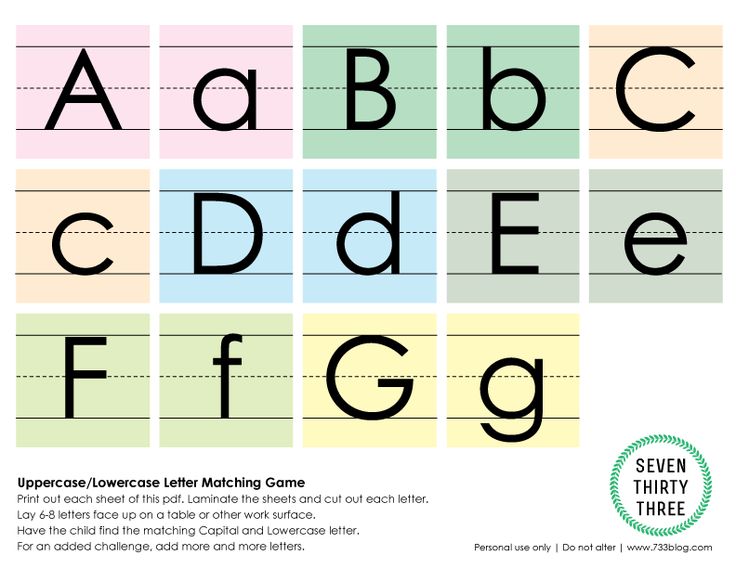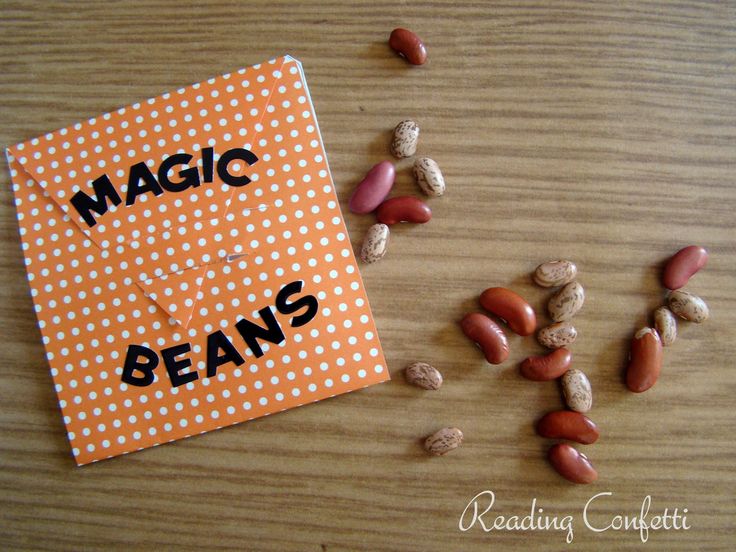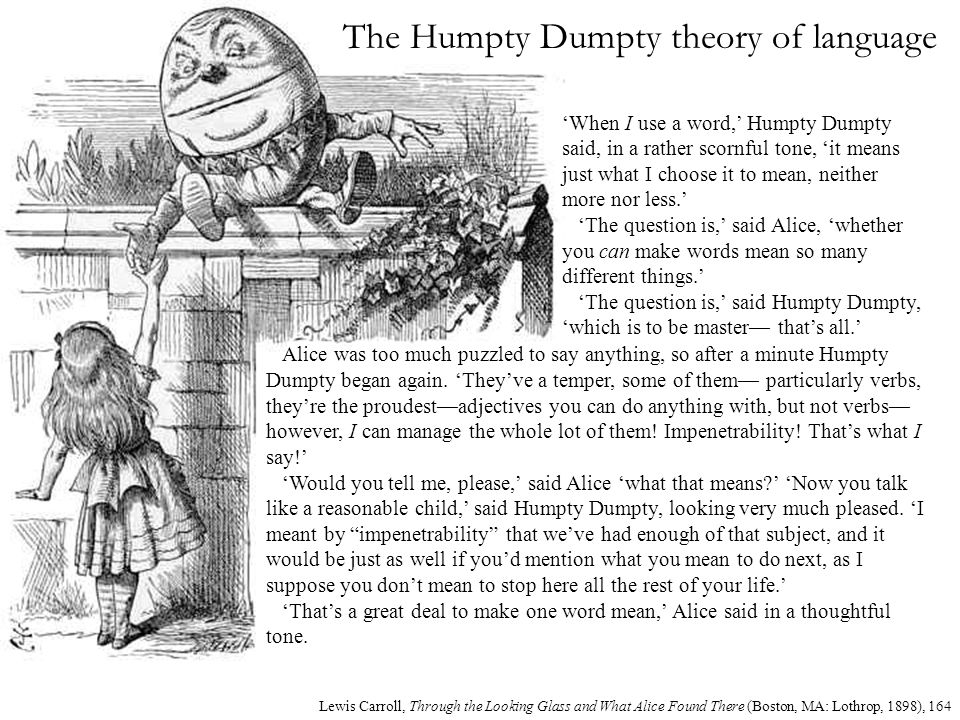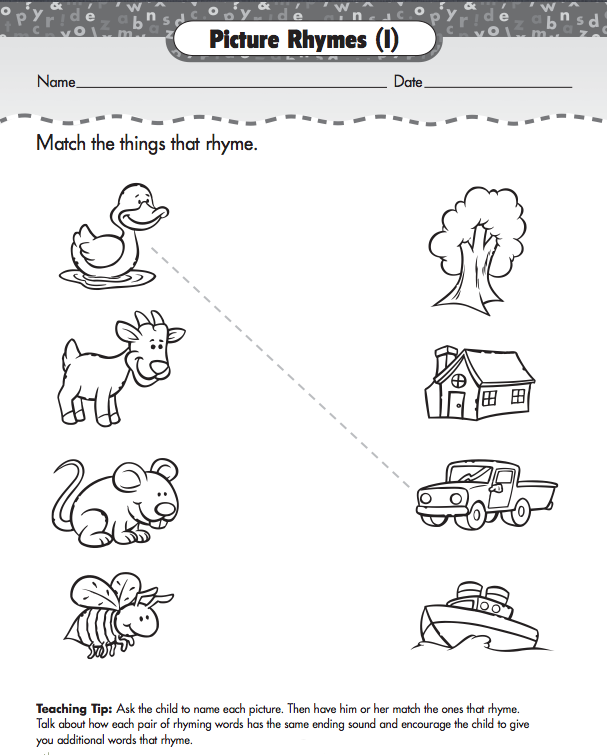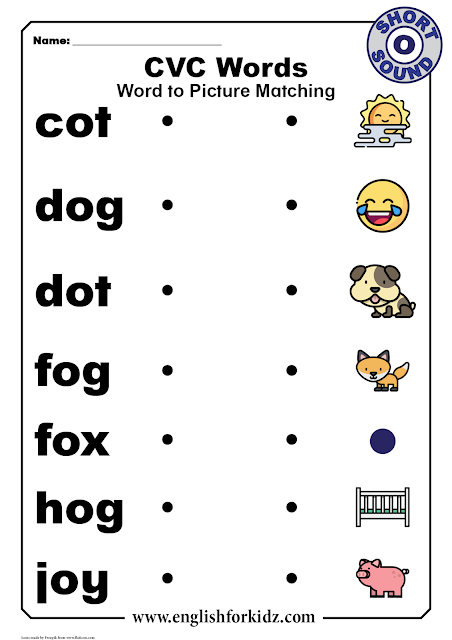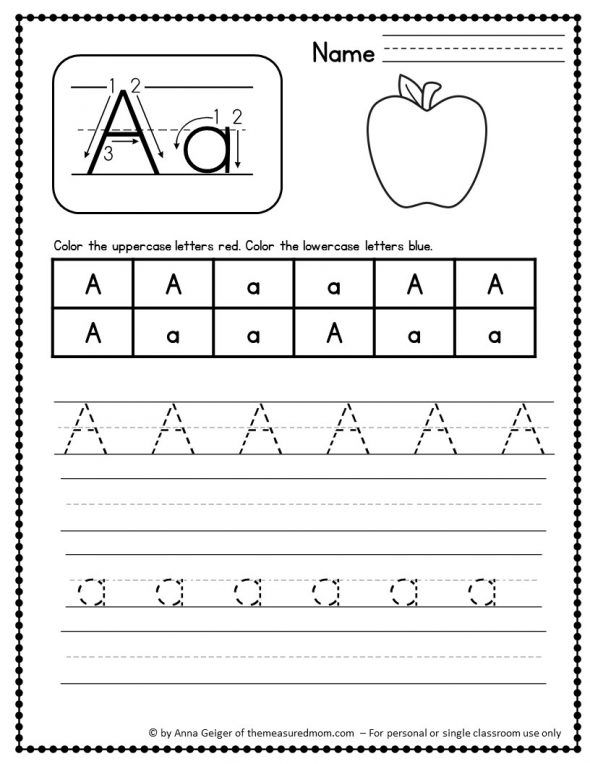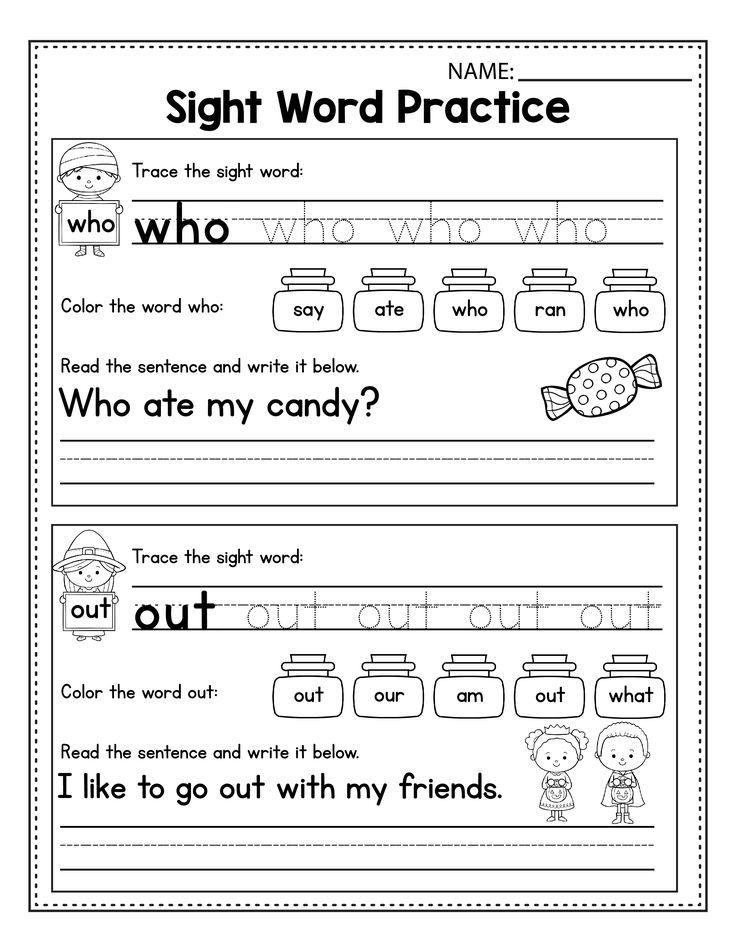Writing lowercase letters
Kids Handwriting: Uppercase & Lowercase Letters
Since less and less instructional time is being spent on handwriting, it is becoming even more important to prioritize the script that students need for functional writing tasks. And, since lowercase letters account for about 95% of all letters in reading and writing, I would like to make the argument for teaching lowercase first!
Lowercase letters are easier to form!Let’s consider four elements:
1. Starting PointsHaving fewer starting points simplifies the decision on where to start. All the capital letters start at the top. Lowercase letters primarily begin at the midline. The exceptions being b, h, k, l, and t which start at the top, and letters e and f. This factor favors uppercase as being easier to learn.
2. Pencil liftsEach pencil lift requires careful visual monitoring and precise motor skills to neatly place the pencil at the start of the next stroke. Seventeen upper letters require two or more lifts compared to seven lowercase letters. Uppercase “E”, for example, has four strokes, requiring one to lift and place the pencil at four different points. Lowercase “e” uses one continuous stroke, which requires less visual attention, and makes it easier and more efficient to form. This suggests that lowercase letters are easier to form.
Children learn to draw the first six pre-writing shapes, in the following developmental order: a vertical line, a horizontal line, a circle, a cross, a square, and finally a diagonal line. Accordingly, letters containing diagonals are the hardest to form. Nine uppercase letters contain diagonal lines in contrast to six lowercase ones. This measure also points to lowercase letters as being easier to write.
4.
Letter GroupsSorting letters by their first stroke and practicing them in their “group” is a highly effective way of learning to write the letters. The repetition of the same continuous motion from one letter to the next builds motor memory and promotes rhythmic writing.
The repetition of the same continuous motion from one letter to the next builds motor memory and promotes rhythmic writing.
Lowercase letters have multiple strokes in common and are easily sorted into four kinesthetic groups:
- l, t, k, I and j all start with a vertical line downward
- c, a, d, o, g and q all start like c
- h, b, r, n, m and p all drop down, up and over
- v, w, x and y all start with a diagonal line down
Letters s, u, f, e and z do share a common stroke with the other letters.
Upper case letters have two kinesthetic groups:
- C, O, Q and G all start like C
- V, W, X and Y start with a diagonal line down
B, D, E, F, H, I, J, K, L M, N, P, R, T, and U all start with a down stroke. However, given that they do not share a similar motion beyond this point to guide correct stroke direction, makes it hard to unify them into kinesthetic group. Letters A, S and Z do not share a common stroke with other letters.
Several lowercase letters are similar in appearance, most notably letters b, d, p, g and q, as well as h and n; making them easier to confuse. Regardless, young students who are learning to read, read in lowercase. And for children who struggle with visually-confusing letters, more practice, not less, would be helpful. Aligning handwriting with reading stands to boost a student’s ability to identify these letters, especially if the child is a kinesthetic learner. Teaching uppercase simply delays the teaching of lowercase or worse, creates more confusion by adding more letters to the mix.
It is also interesting to note that lowercase words are easier to read. Jason Santa Maria’s article, “How We Read”, explains that this is because we see words as shapes. Lowercase has ascenders and descenders that form irregular shapes, and make it easier to identify the words, whereas capitals appear as “big rectangular blocks which take much longer to process”.
There is a large variance in how well students adapt to lowercase letters after learning uppercase. For students who are predisposed to handwriting difficulties and have been taught uppercase first, I have found that they confuse the two alphabets and tend to be very resistant to switching from upper to lowercase. Apart from affecting overall legibility, mixing upper and lowercase, or using upper case only, is inefficient and results in slow, tedious writing.
What do the experts say?When asked to weigh in on the letter case debate, Dave Thompson, CEO of Educational Fontware, and designer of over 900 fonts said, “Lowercase is definitely easier. Most of the letters are a lot shorter, which involves less movement of the hand for the little ones. There are fewer pen lifts, and much more similarity between smalls (a, c, d, e, g, o, q for example all start with or have a counterclockwise hook) than caps.
 Lowercase uses retrace without pen lift for b, d, h, m, n, p, and r. Caps are usually taught as pen lifts instead of retrace: B, D, M, N, P, and R. Finally, you can make words out of the smalls, but not the caps.”
Lowercase uses retrace without pen lift for b, d, h, m, n, p, and r. Caps are usually taught as pen lifts instead of retrace: B, D, M, N, P, and R. Finally, you can make words out of the smalls, but not the caps.”
Virginia Berninger, a UW educational psychology professor, who studied the effect of handwriting on the human brain, says that it is important to teach lowercase letters first because they are used more frequently in writing and are encountered more frequently in written text. Uppercase should only be taught once lowercase letters are legible and automatic. Teachers should also keep written work to a minimum until lowercase writing is functional.
References
Berninger, V. W., & Wolf, B. J. (2009). Teaching
students with dyslexia and dysgraphia: Lessons from teaching and science.
Baltimore, MD: Brookes Publishing Company.
Maria, Jason Santa. “How We Read.” A List Apart, 2014. Web. 15 Dec. 2016. Retrieved from http://alistapart.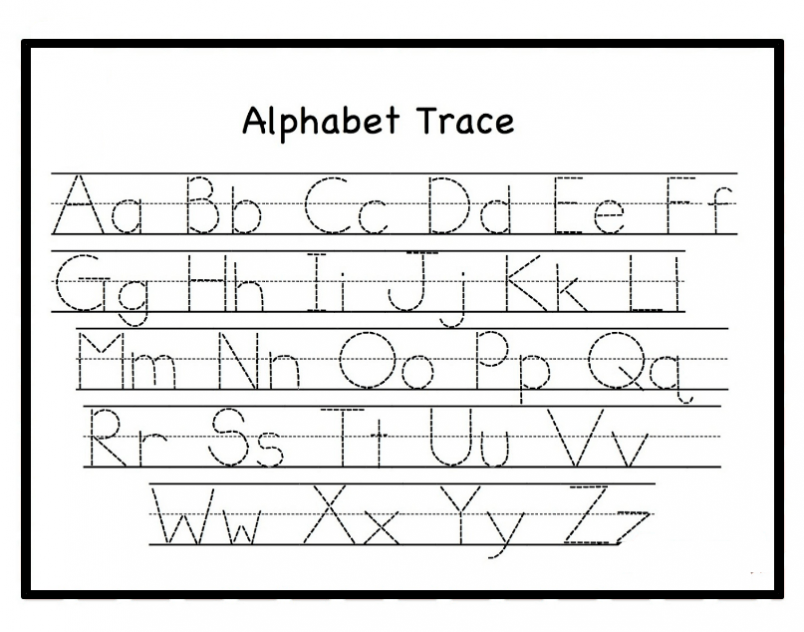 com/article/how-we-readhttp://alistapart.com/article/how-we-read
com/article/how-we-readhttp://alistapart.com/article/how-we-read
Alphabet - Lowercase Letters Archives FREE and No Login
Showing all 15 results
Sort by popularitySort by latestSort by price: low to highSort by price: high to lowPopular Today
Free Lowercase Letter Writing Worksheet – Free kindergarten worksheet and printable – Alphabet Letter Practice
Look at each letter and write the letter. This free Write the Lowercase Letters is great for kindergarten or pre-k students. Alphabet practice from A to Z.
Free Christmas Letter Matching Worksheet – A to H – Free Kindergarten and Printable Alphabet Matching – Letter Matching Practice
Draw a line to match the Uppercase and Lowercase letters. Color the matching letters the same color. Practice the recognizing the upper and lowercase letters by matching the letters from A through H. This is a fun winter activity for preschool and kindergarten students.
Free Christmas Alphabet Dot to Dot – Pre-K Worksheet – Printable Worksheet – Free Christmas Worksheet
Connect the lowercase letters to complete the picture and color.
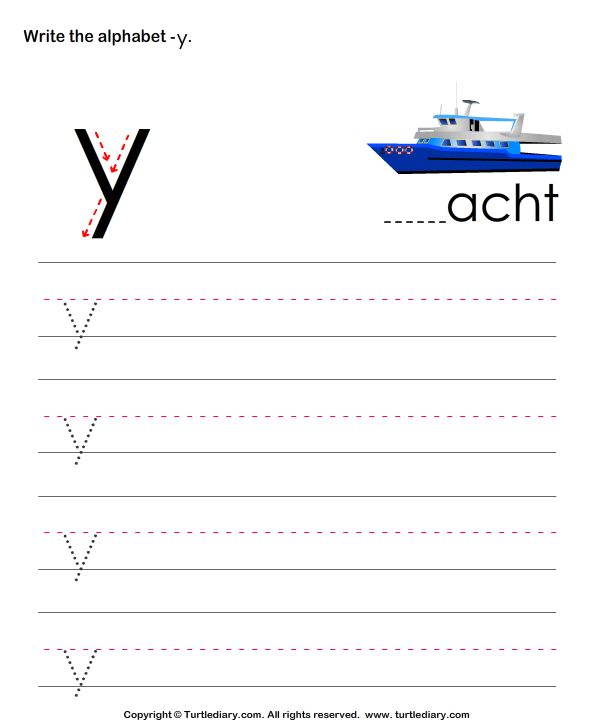 Great for TK, preschool, and Kindergarten. This free printable worksheet provides great practice. It also helps strengthen the fine motor skills. Great for Pre-k and Kindergarten students. Enjoy!
Great for TK, preschool, and Kindergarten. This free printable worksheet provides great practice. It also helps strengthen the fine motor skills. Great for Pre-k and Kindergarten students. Enjoy!Free Trace Lowercase D’Nealian Letters Worksheet – Free Lowercase Letters Printable Worksheet
Practice writing all the Lowercase letters with this free worksheet. Students look at each sample letter and copy it neatly on the lines. An alternative use of this page would be to ask students to write the uppercase letters next to each lowercase letter.
Free Santa Letter Writing Worksheet – Free Kindergarten Worksheet – Free Printable Worksheet
Practice reading and writing this free printable worksheet. Students will write all the lowercase letters in this cute Santa Letter for the month of Christmas. This is great writing practice lowercase worksheet.
Free Lowercase Letter Writing Practice -Christmas Gumdrops – Free Lowercase Printable Worksheet
Write the missing letters on the candy gumdrops.
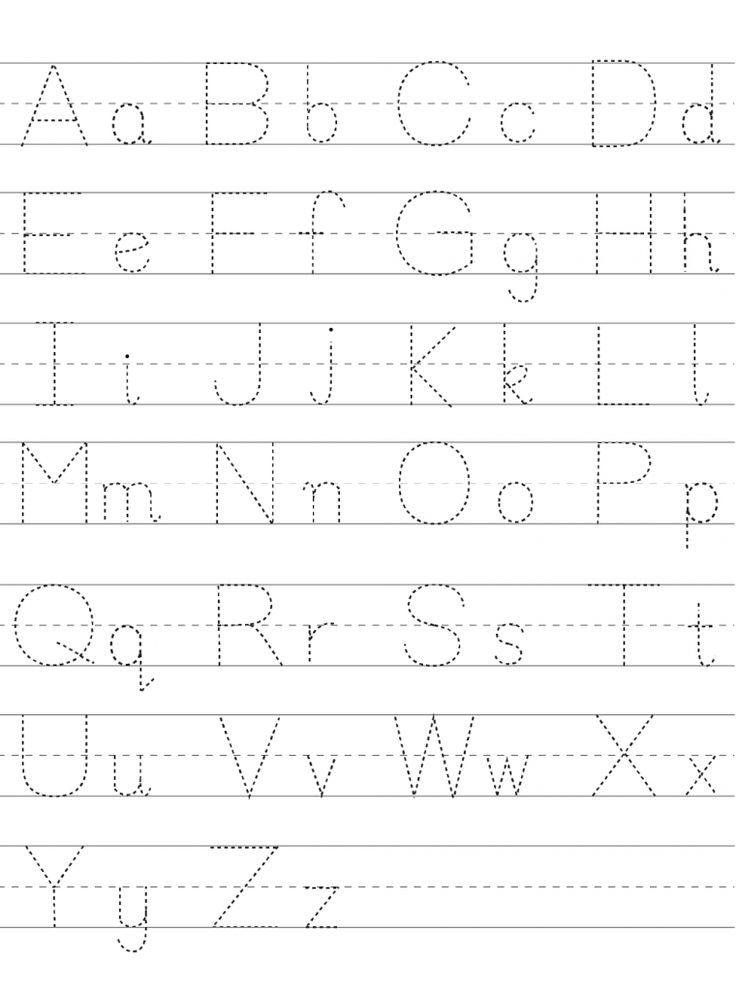 Early finishers can also color the candy. This is a great companion activity to any Gingerbread Man story or activity. Practice writing all the lowercase letters with this free worksheet. Students look at each sample letter and copy it neatly on the lines.
Early finishers can also color the candy. This is a great companion activity to any Gingerbread Man story or activity. Practice writing all the lowercase letters with this free worksheet. Students look at each sample letter and copy it neatly on the lines.Free Lowercase D’Nealian Letter Writing Worksheet – Free kindergarten worksheet and printable – Alphabet Letter Practice
Look at each letter and write the letter. This free Write the Lowercase Letters is great for kindergarten or pre-k students.
Free Lowercase Cursive Worksheet – Letters A to D – Printable
This free worksheet provides practice writing the letters A to D with cursive. Students trace and write the lowercase letters on each line. It is a fun free printable worksheet for cursive!
Free Lowercase Cursive Worksheet – Letters Q to T – Printable
This free worksheet provides practice writing the letters Q to T with cursive. Students trace and write the lowercase letters on each line.
 It is a fun free printable worksheet for cursive!
It is a fun free printable worksheet for cursive!Free Lowercase Cursive Worksheet – Letters E to H – Printable
This free worksheet provides practice writing the letters E to H with cursive. Students trace and write the lowercase letters on each line. It is a fun free printable worksheet for cursive!
Free Lowercase Cursive Worksheet – Letters Y and Z – Printable
This free worksheet provides practice writing the letters Y to Z with cursive. Students trace and write the lowercase letters on each line. It is a fun free printable worksheet for cursive!
Free Lowercase Cursive Worksheet – Letters M to P – Printable
This free worksheet provides practice writing the letters M to P with cursive. Students trace and write the lowercase letters on each line. It is a fun free printable worksheet for cursive!
Categories
Search for:
Which is correct: lowercase letters or lowercase letters?
https://radiosputnik.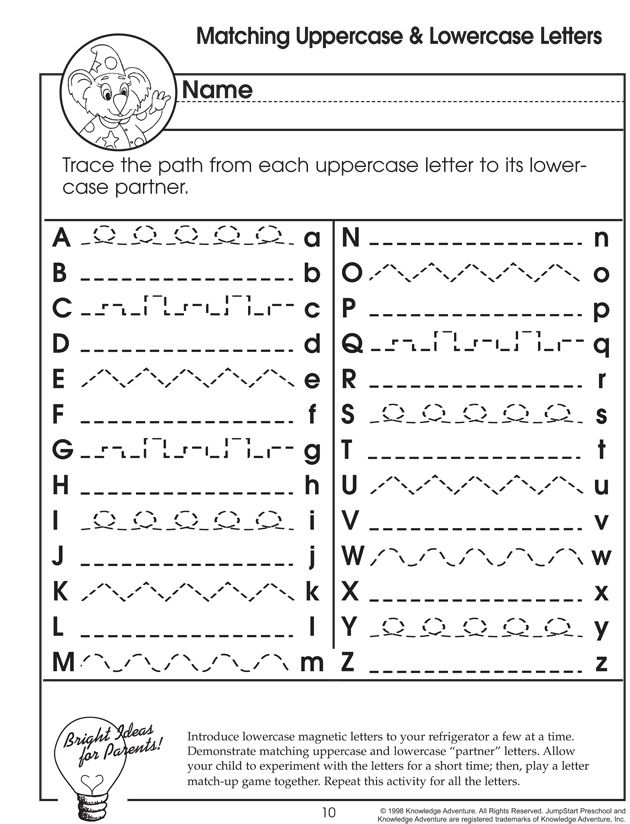 ria.ru/20191222/1562699898.html
ria.ru/20191222/1562699898.html
What is correct: lowercase letters or lowercase letters?
Which is correct: lowercase letters or lowercase letters? - Radio Sputnik, 01/20/2020
Which is correct: lowercase letters or lowercase letters?
In everyday life we usually talk about writing letters "large and small letters". Linguists use the words "capital" and... Radio Sputnik, 01/20/2020
2019-12-22T19: 57
2019-12-22T19: 57
2020-01-20t11: 29
On the air
Podkasta-radio sputnik
Russian oral
/html/head/meta [ @name='og:title']/@content
/html/head/meta[@name='og:description']/@content
https://cdnn21.img.ria.ru/images/156269 /98/1562699891_0:3:1036:586_1920x0_80_0_0_06459521286568cbf0989a2234e47a32.jpg
Which is correct: lower case or lower case?
In everyday life, we usually talk about writing letters in large and small letters. Linguists, on the other hand, use the words uppercase and lowercase to designate the styles of letters in writing.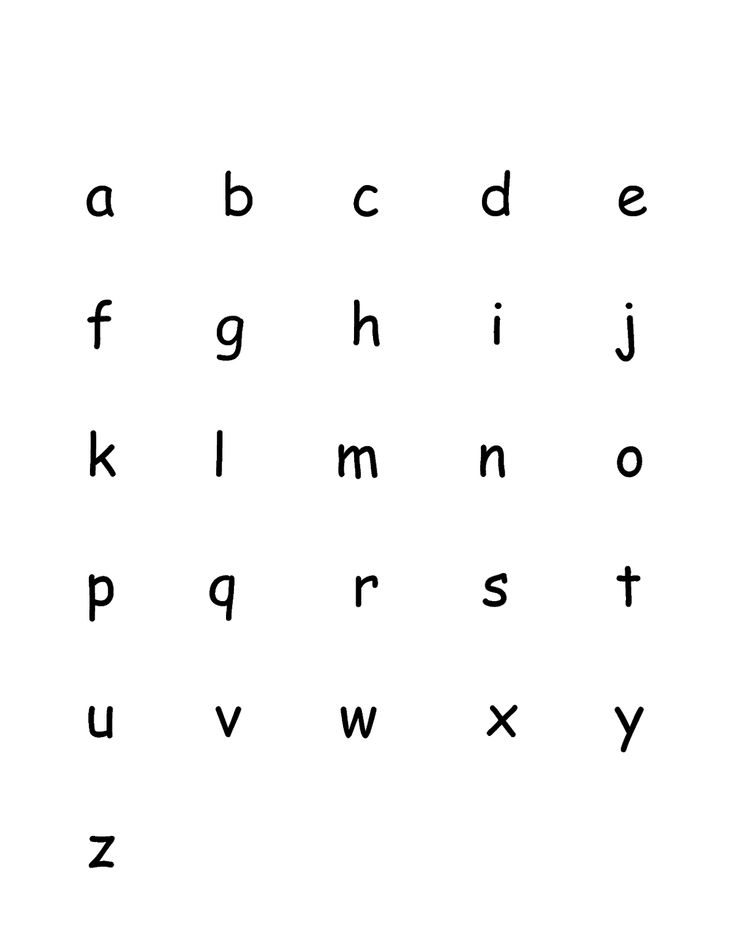 Uppercase letters are large and lowercase letters are small. And what about the letters - uppercase and lowercase - large or small? Letter height. An uppercase letter differs from a lowercase letter in greater height, an uppercase letter is higher. You have already heard the accent with which I pronounce the word lower case, with the emphasis on the last syllable. It is with such an accent on the last syllable - a lowercase letter - that it is recommended to pronounce this word in strict speech. A capital letter is immediately visible in the text - it highlights the word, elevates it, and not only in the literal sense, but also figuratively. Therefore, capital letters also have a special stylistic use - we write the pronouns "You", "Your" with a capital letter, expressing a courteous, polite attitude when referring to a specific person. There are also common words that can be capitalized. We write the words Motherland, Fatherland, Fatherland, Teacher, Good, Man with a capital letter in texts where we use these words in a special high sense.
Uppercase letters are large and lowercase letters are small. And what about the letters - uppercase and lowercase - large or small? Letter height. An uppercase letter differs from a lowercase letter in greater height, an uppercase letter is higher. You have already heard the accent with which I pronounce the word lower case, with the emphasis on the last syllable. It is with such an accent on the last syllable - a lowercase letter - that it is recommended to pronounce this word in strict speech. A capital letter is immediately visible in the text - it highlights the word, elevates it, and not only in the literal sense, but also figuratively. Therefore, capital letters also have a special stylistic use - we write the pronouns "You", "Your" with a capital letter, expressing a courteous, polite attitude when referring to a specific person. There are also common words that can be capitalized. We write the words Motherland, Fatherland, Fatherland, Teacher, Good, Man with a capital letter in texts where we use these words in a special high sense.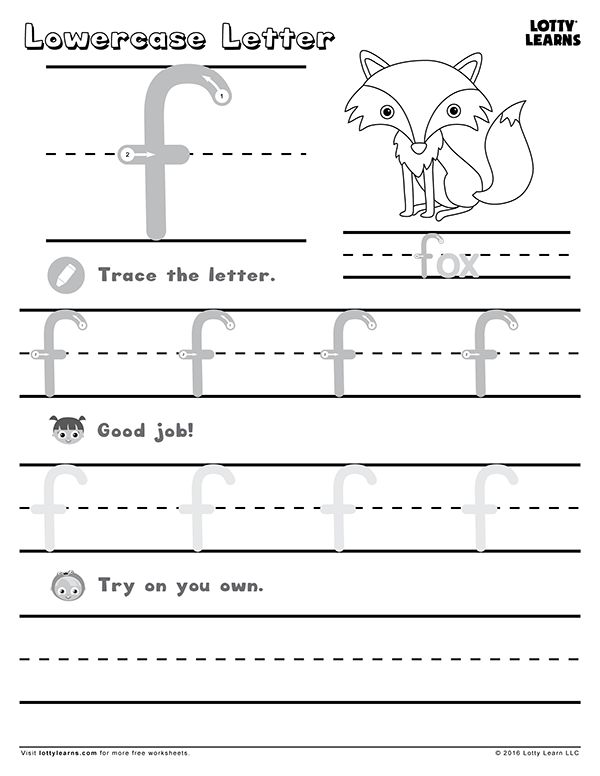 Such a special use of capital letters is reflected in the turnover with a capital letter - this is how we talk about someone, something worthy of the highest appreciation, admiration. Yakov Karlovich Grot, Russian linguist 19century, in the book "Russian Spelling" he wrote: Large letters constitute, in fact, the luxury of writing. Affordable and necessary luxury.
Such a special use of capital letters is reflected in the turnover with a capital letter - this is how we talk about someone, something worthy of the highest appreciation, admiration. Yakov Karlovich Grot, Russian linguist 19century, in the book "Russian Spelling" he wrote: Large letters constitute, in fact, the luxury of writing. Affordable and necessary luxury.
audio/mpeg
Which is correct: lowercase or lowercase?
In everyday life, we usually talk about writing letters in large and small letters. Linguists, on the other hand, use the words uppercase and lowercase to designate the styles of letters in writing. Uppercase letters are large and lowercase letters are small. And what about the letters - uppercase and lowercase - large or small? Letter height. An uppercase letter differs from a lowercase letter in greater height, an uppercase letter is higher. You have already heard the accent with which I pronounce the word lower case, with the emphasis on the last syllable.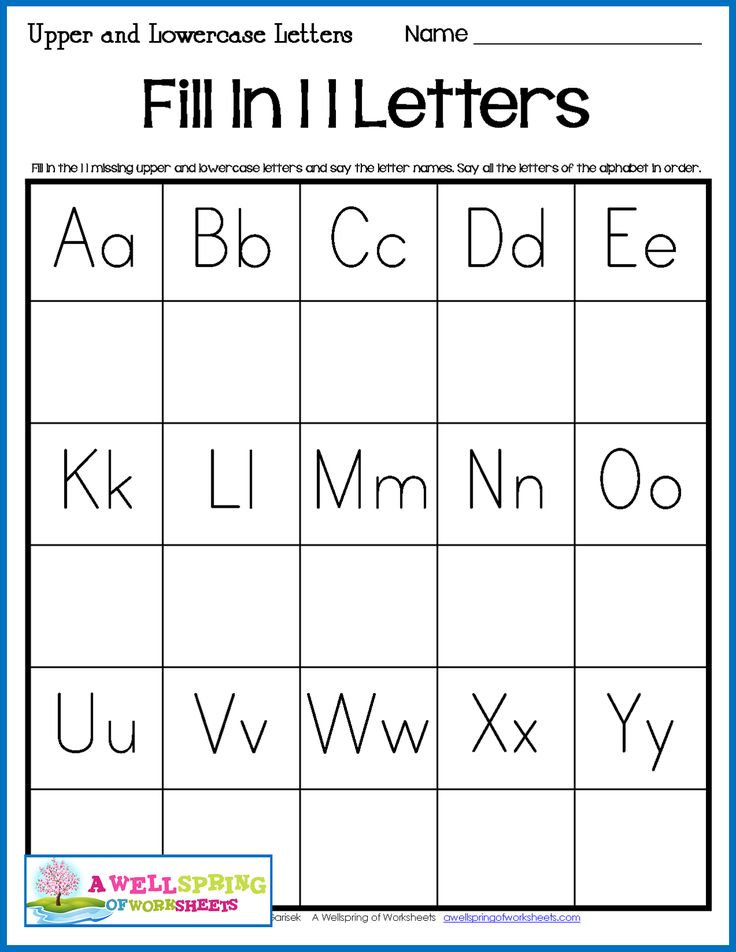 It is with such an accent on the last syllable - a lowercase letter - that it is recommended to pronounce this word in strict speech. A capital letter is immediately visible in the text - it highlights the word, elevates it, and not only in the literal sense, but also figuratively. Therefore, capital letters also have a special stylistic use - we write the pronouns "You", "Your" with a capital letter, expressing a courteous, polite attitude when referring to a specific person. There are also common words that can be capitalized. We write the words Motherland, Fatherland, Fatherland, Teacher, Good, Man with a capital letter in texts where we use these words in a special high sense. Such a special use of capital letters is reflected in the turnover with a capital letter - this is how we talk about someone, something worthy of the highest appreciation, admiration. Yakov Karlovich Grot, Russian linguist 19century, in the book "Russian Spelling" he wrote: Large letters constitute, in fact, the luxury of writing.
It is with such an accent on the last syllable - a lowercase letter - that it is recommended to pronounce this word in strict speech. A capital letter is immediately visible in the text - it highlights the word, elevates it, and not only in the literal sense, but also figuratively. Therefore, capital letters also have a special stylistic use - we write the pronouns "You", "Your" with a capital letter, expressing a courteous, polite attitude when referring to a specific person. There are also common words that can be capitalized. We write the words Motherland, Fatherland, Fatherland, Teacher, Good, Man with a capital letter in texts where we use these words in a special high sense. Such a special use of capital letters is reflected in the turnover with a capital letter - this is how we talk about someone, something worthy of the highest appreciation, admiration. Yakov Karlovich Grot, Russian linguist 19century, in the book "Russian Spelling" he wrote: Large letters constitute, in fact, the luxury of writing.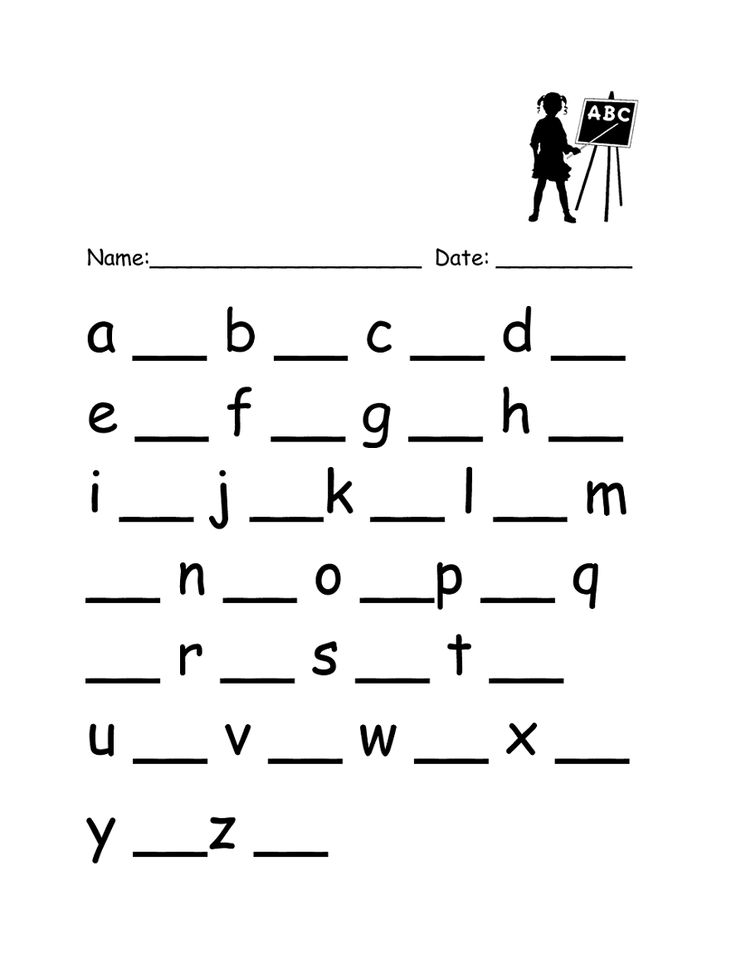 Affordable and necessary luxury.
Affordable and necessary luxury.
audio/mpeg
In everyday life we usually talk about writing letters "large and small letters". Linguists, on the other hand, use the words "capital" and "lowercase" to designate the styles of letters in writing. Uppercase letters are large and lowercase letters are small. And what about the letters - uppercase and lowercase - large or small? Letter height. An uppercase letter differs from a lowercase letter in greater height, an uppercase letter is higher. You have already heard the accent with which I pronounce the word lower case, with the emphasis on the last syllable. It is with such an accent on the last syllable - a lowercase letter - that it is recommended to pronounce this word in strict speech. A capital letter is immediately visible in the text - it highlights the word, elevates it, and not only in the literal sense, but also figuratively. Therefore, capital letters also have a special stylistic use - we write the pronouns "You", "Your" with a capital letter, expressing a courteous, polite attitude when referring to a specific person.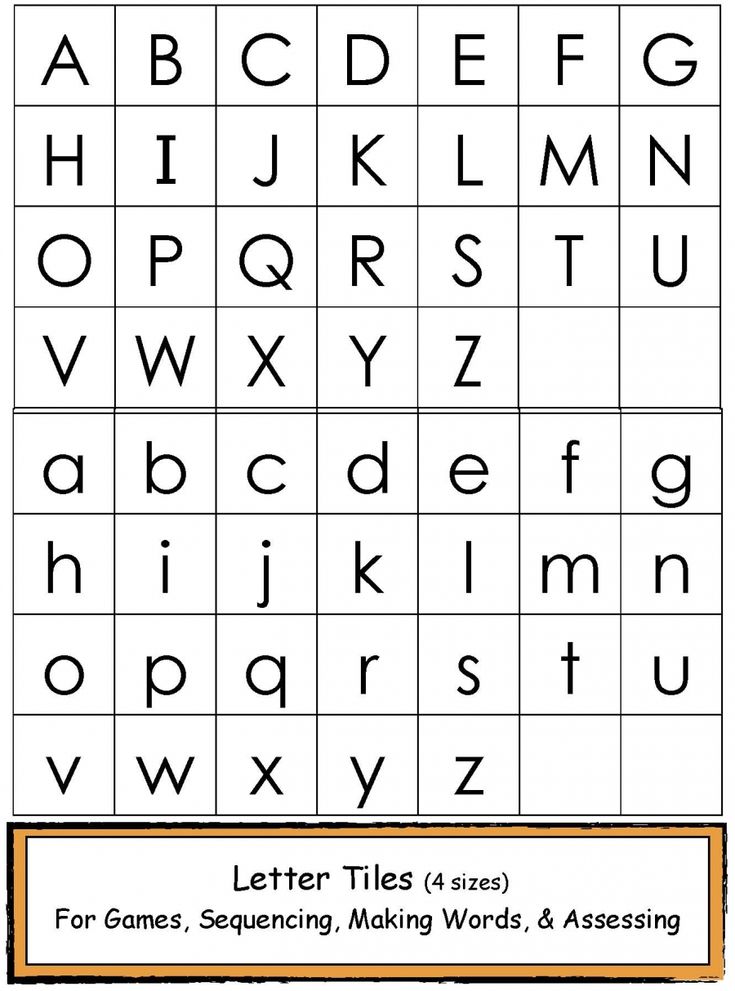 There are also common words that can be capitalized. We write the words Motherland, Fatherland, Fatherland, Teacher, Good, Man with a capital letter in texts where we use these words in a special high sense. Such a special use of capital letters is reflected in the turnover with a capital letter - this is how we talk about someone, something worthy of the highest appreciation, admiration. Yakov Karlovich Grot, Russian linguist 19century, in the book "Russian Spelling" he wrote: "Big letters are, in fact, the luxury of writing. Permissible and necessary luxury."
There are also common words that can be capitalized. We write the words Motherland, Fatherland, Fatherland, Teacher, Good, Man with a capital letter in texts where we use these words in a special high sense. Such a special use of capital letters is reflected in the turnover with a capital letter - this is how we talk about someone, something worthy of the highest appreciation, admiration. Yakov Karlovich Grot, Russian linguist 19century, in the book "Russian Spelling" he wrote: "Big letters are, in fact, the luxury of writing. Permissible and necessary luxury."
radio sputnik
1
5
4.7
9000
7 495 645-6601
Federal State Unitary Enterprise “Russia Today”
HTTPS: // XN-C1ACBL2ABDLKBDLKBDLKBDLKBDLKBDLKB .xn--p1ai/awards/
2019
Radio Sputnik
1
5
4.7
96
7 495 645-6601
Rossiya Segodnya
https://xn--c1acbl2abdlkab1og. xn--p1ai/awards/
xn--p1ai/awards/
News ru-RU
https://radiosputnik.ria.ru/docs/about/copyright.html
https://xn--c1acbl2abdlkab1og.xn--p1ai/
Radio Sputnik
1
5
3 4.7
96
7 495 645-6601
7 495 645-6601
Rossiya Segodnya
5
4.7
96
7 495 645-6601
Rossiya Segodnya
https://xn--c1acblog.xdlkab03 https://xn--c1acblog.xdlkab03
on air, podcasts - radio sputnik, audio
on air, podcasts - Radio Sputnik, Russian oral
Uppercase and lowercase letters in documents
When compiling documents and checking projects prepared by executors, it is quite often necessary to “take out” errors from them, incl. fight for literacy. And this article will help you with this. You will figure out what letter to write the legal form in the name of the company, as well as the names of government agencies, structural divisions, positions, elements of foreign names of people, names of documents, the word "application", the names of the subject of the Russian Federation, geographical concepts, airports, railway stations, streets , metro stations, events and holidays, when you write with a capital letter, and when with a small letter.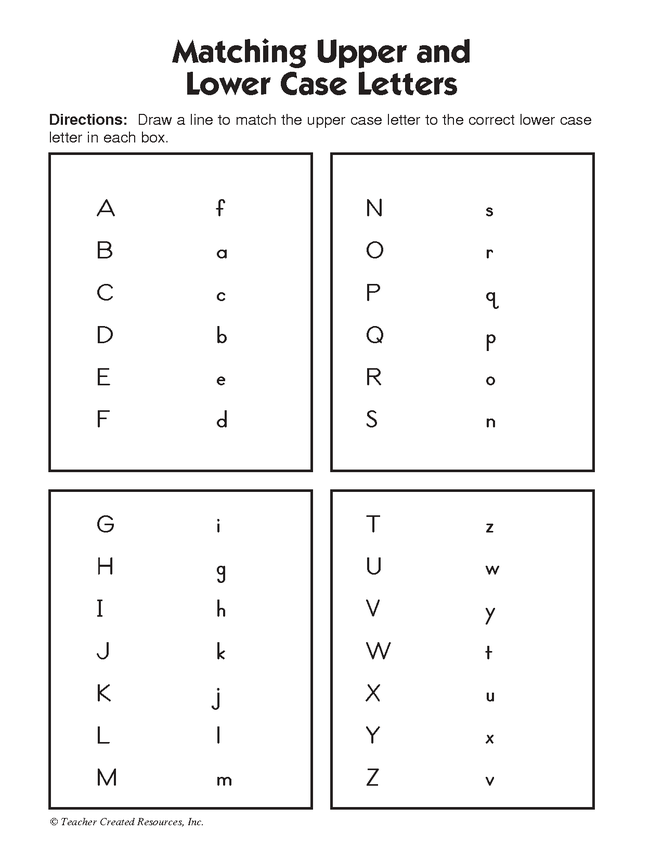 The difficulty lies in the fact that sometimes the choice of lowercase or uppercase letter for a particular element can be different. And it depends on the specific circumstances.
The difficulty lies in the fact that sometimes the choice of lowercase or uppercase letter for a particular element can be different. And it depends on the specific circumstances.
Capital letter has 2 roles:
1. Serves to highlight certain sections of text. It is placed at the beginning of the text and after punctuation marks that end the sentence (after a period, ellipsis, question mark or exclamation point). This rule is usually not difficult. Although a lowercase (small) letter after the signs "!" or "?", but in business speech this almost never happens.
2. Allows to distinguish proper names from common nouns. And this rule is very popular in business speech.
For information
Previously, in Rus' everything was written in continuous text, even without spaces between words. Only the very beginning of the text was marked with a beautiful letter, decorating it to make it more noticeable. Such a letter was larger than others, it was called a capital letter or capital letter (meaning spelled out, painted).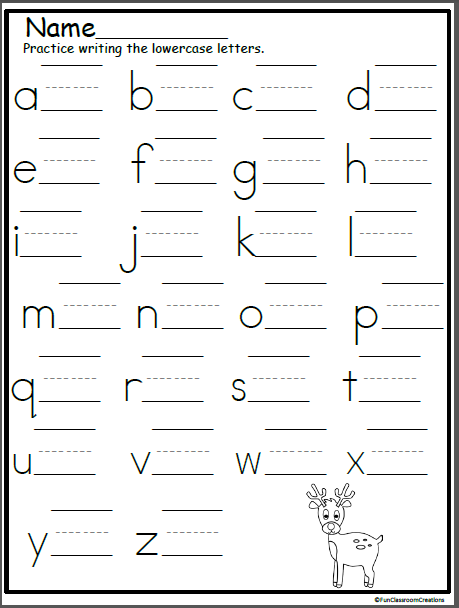
When punctuation marks appeared, it was necessary to indicate the beginning of a sentence - here again a capital letter came in handy. True, you can’t save up for every offer of artistic delights. And the uppercase lost its beauty, retaining the name and size, which is larger than that of other letters in the line - lowercase.
Some languages make extensive use of capitalization, for example marking almost all nouns in text. Admirers of the English language strive to impose the same rules in Russian. But you don’t need to mindlessly adopt other people’s rules in your monastery.
Proper names are divided into 2 groups:
- The first - proper in the narrow sense (they belong to someone or something). These include:
- names and nicknames of people,
- animal names,
- geographical and astronomical names.
- The second group - items . These are the names of authorities, other institutions and other organizations, associations, historical eras, public events, newspapers, magazines, books, awards, industrial products and much more.
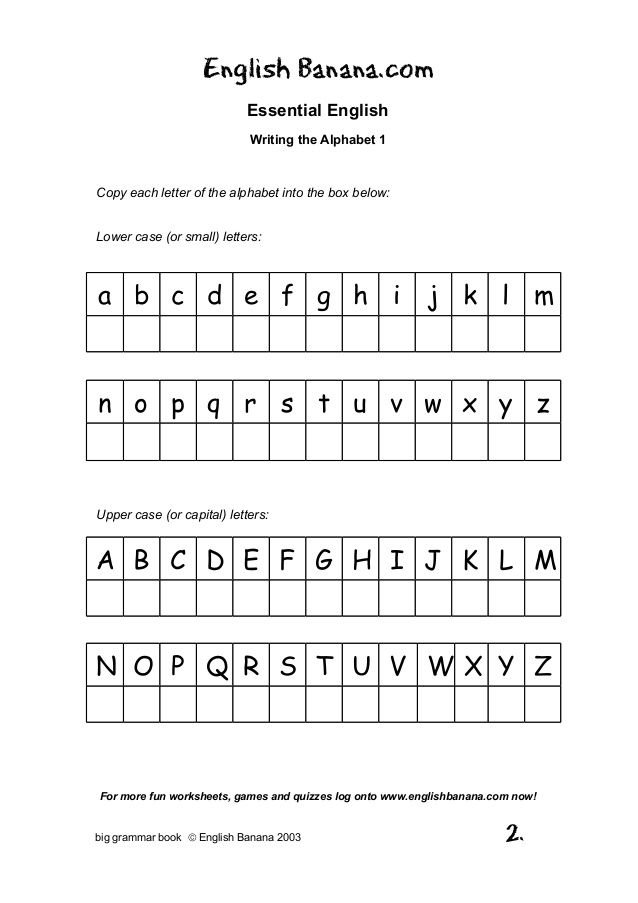
The spelling of proper names is regulated by the rules of the Russian language. And although there are many difficult ones among them, still remember them in order to be guided by a literate person. The general rule is: in proper names (in the narrow sense), all words are capitalized. For example: Nikolai Vasilievich Gogol (first name, patronymic and last name of a person), Santa Claus (name of a fairy-tale character), Kashtanka (animal nickname), Sirius (star name), Ursa Major (astronomical name), Kamchatka (geographical name), Krivoy Rog (city name).
In speech, proper names are usually accompanied by words denoting gender . For example: a dog (generic term) Bug (name) was playing in the yard. So generic terms do not belong to proper names, they are common nouns and are written with a lowercase letter.
Names of people, incl. foreign
First name, patronymic and last name are always capitalized.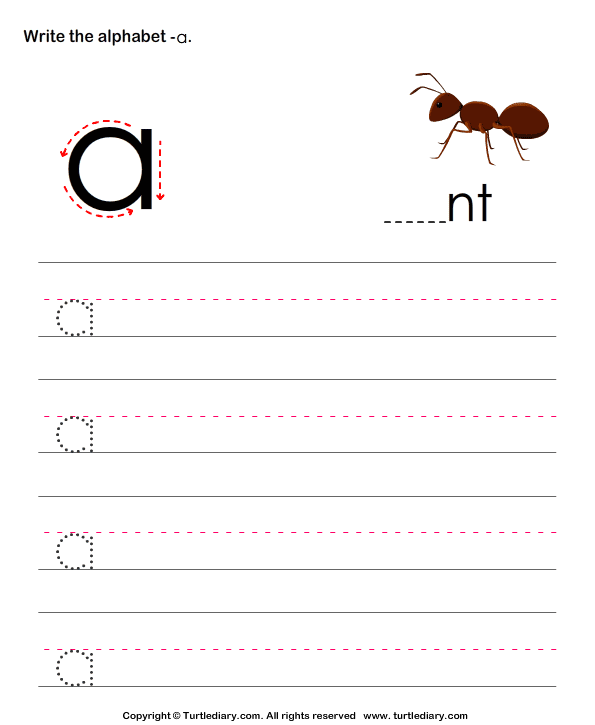
Double surnames are written with a hyphen and both with a capital. For example, Sukhotina-Tolstaya, Rimsky-Korsakov.
Own function words included in names (prepositions, articles) are written in lower case. They are not in Russian names. And in foreign languages, words denoting social status, family relations, and the like are not uncommon. They can be considered generic terms. The following words are used in Eastern names: yeah, hell, al, al, ar, ash, bey, bek, ben, zade, ibn, kyzy, ogly, pasha, khan, ed, el. According to the general rule, they are all written with a lower case - Kerim-aga, Omar ash-Sharif, Bashar Hafez al-Assad.
But a capital letter is also possible. For example, if the particle ibn precedes the name: Ibn Sina. And also in a number of names, the spelling of which is determined by tradition. Usually prepositions, articles, etc. function words (van, yes, das, de, della, der, di, dos, du, la, le, background, etc. ) are written with lowercase (Leonardo da Vinci, Hans von Bülow, Honore de Balzac).
) are written with lowercase (Leonardo da Vinci, Hans von Bülow, Honore de Balzac).
But capitalization is also possible, as in the source language: Charles De Coster, Dos Passos, Leonardo DiCaprio.
Well, DiCaprio may not get a job in a Russian company. But the spelling of Korean, Vietnamese, etc., as well as Chinese names is better to know. These names consist of 2 or more parts, and each (even 1 letter) is capitalized. For example: Deng Xiaoping, Park Su Yong, Le Thanh Ngi.
In Japanese names we meet particle san , which is written with a hyphen and lowercase (Cio-Cio-san).
Capitalized and hyphenated, Ter- is written in Armenian surnames: Ter-Petrosyan, Ter-Akopov.
Geographical names and administrative-territorial names
If a company has a wide geography of sales or a large branch network, then different geographical names are mentioned in documents every now and then. Let's recall the rules for writing them.